
Cottony cushion scale
Date: 2022 Author: Jianhua Mo
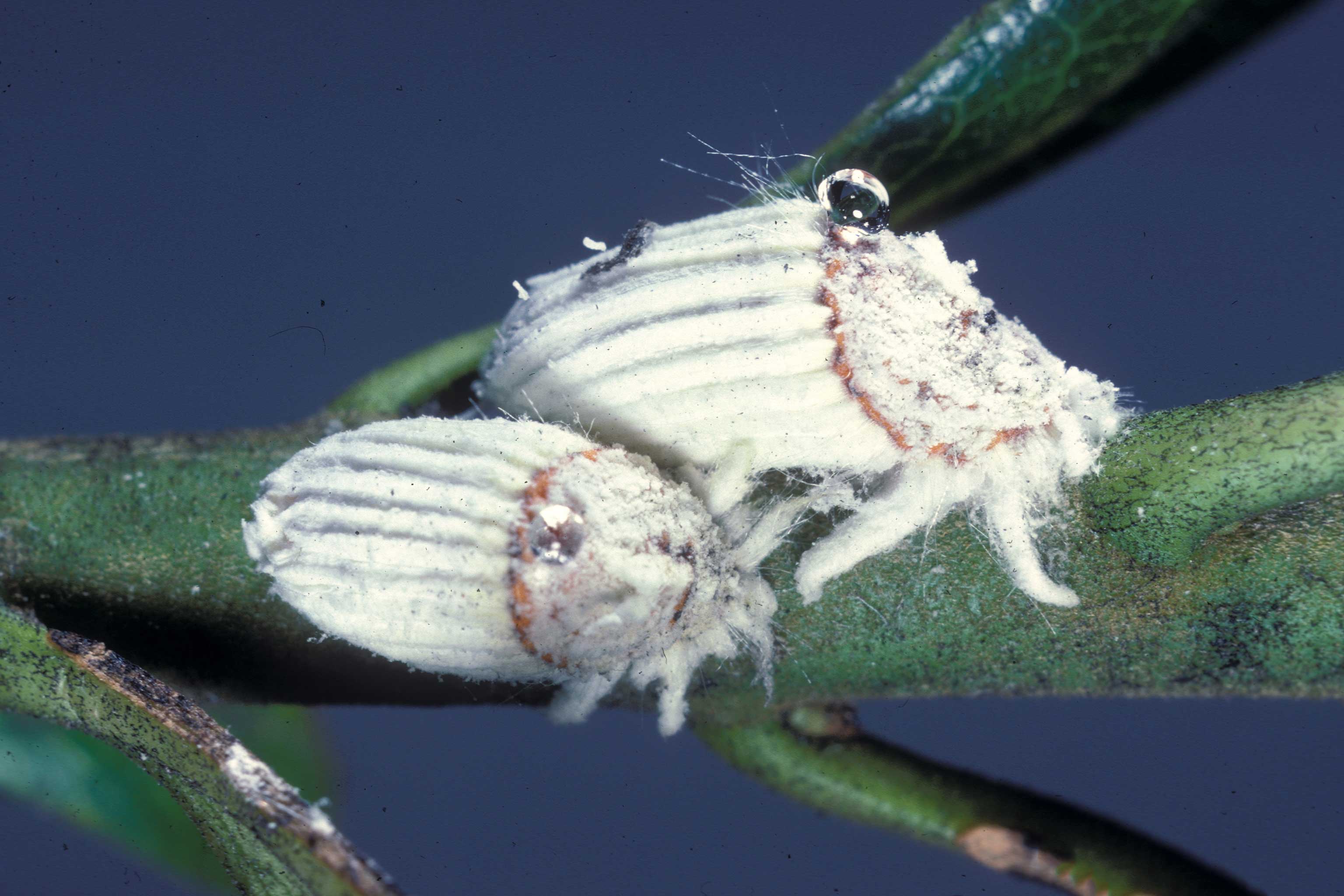
Cottony cushion scale (Icerya purchasi) is widespread throughout the world wherever citrus is grown. Its cottony egg sac and profuse honeydew production make cottony cushion scale (Figure 1) easy to spot in the orchard.
Description
Mature females have bright orange-red, yellow or brown bodies. The body is partially or entirely covered with yellowish or white wax. The most obvious feature is the large fluted egg sac, which can be 2 to 2.5 times longer than the body (total length about 10 mm). The egg sac contains about 1,000 red eggs.
The complete life cycle of cottony cushion scale takes around 2 months in summer, with at least 2 generations occurring per year.
Depending on the temperature, eggs hatch in a few days (summer) to 2 months (winter). The newly hatched nymphs are reddish with dark antennae and legs (Figure 2). The antennae are six-segmented. Nymphs can be wind-blown to new locations, crawl to nearby plants, or possibly hitchhike on other animals. After three moults, the adult begins to deposit eggs and secrete the conspicuous egg sac. As the egg sac is formed, the scale’s abdomen becomes more and more tilted until the scale appears to be standing on its head. The female does not need to mate to produce young.
Males are rare. They are winged with a dark red body and dark antennae.
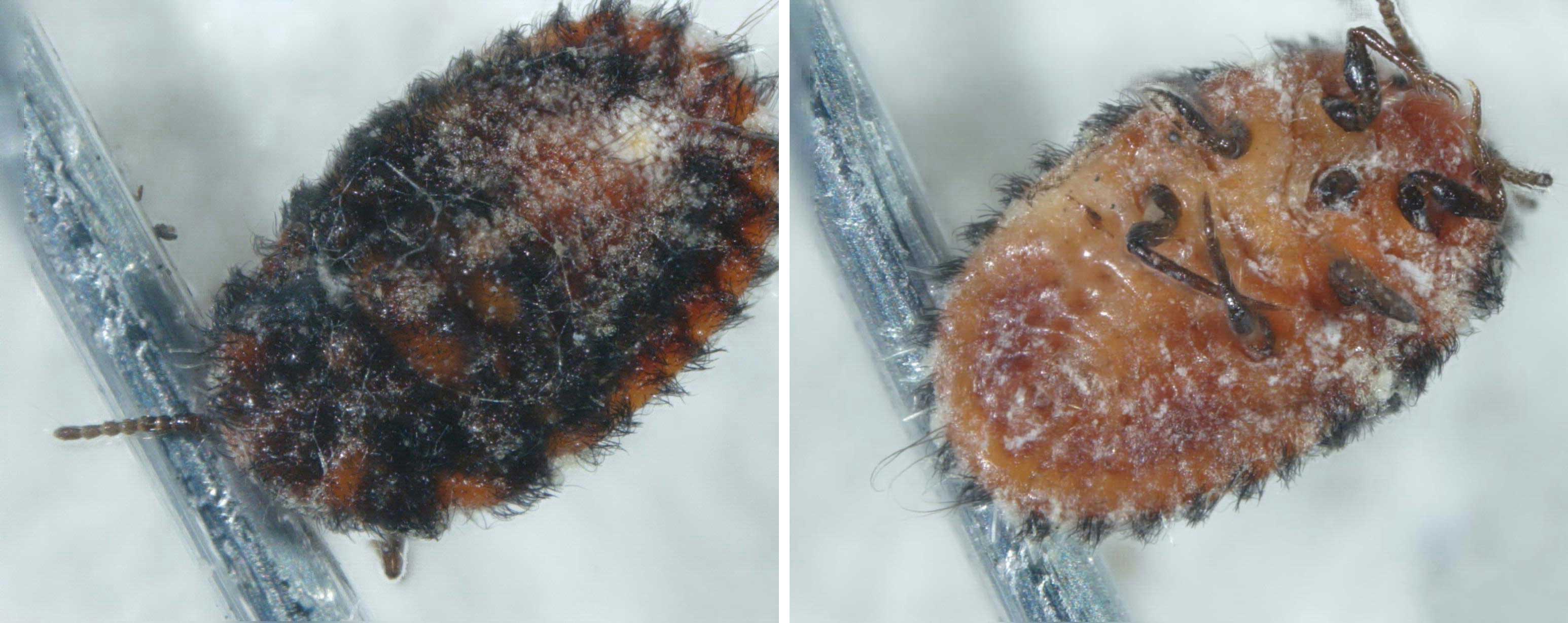
Damage
Cottony cushion scale can severely damage trees and nursery stock. Decreased tree vitality, fruit drop, and defoliation result from the scale feeding as they suck the phloem sap from the leaves, twigs, branches, and trunk. Early immature stages will feed on the leaves, where they settle in rows along the midrib and veins, and on the smaller twigs. The older nymphs continue to feed and migrate to the larger twigs, and finally, as adults, they settle on the larger branches and trunk.
This scale is seldom found on the fruit.
Added damage can result from sooty mould build-up (Figure 3) due to the honeydew excreted by the scale. The honeydew encourages sooty mould growth, which downgrades fruit quality and, in severe infestations, causes leaf drop, twig dieback and deterioration of tree health.
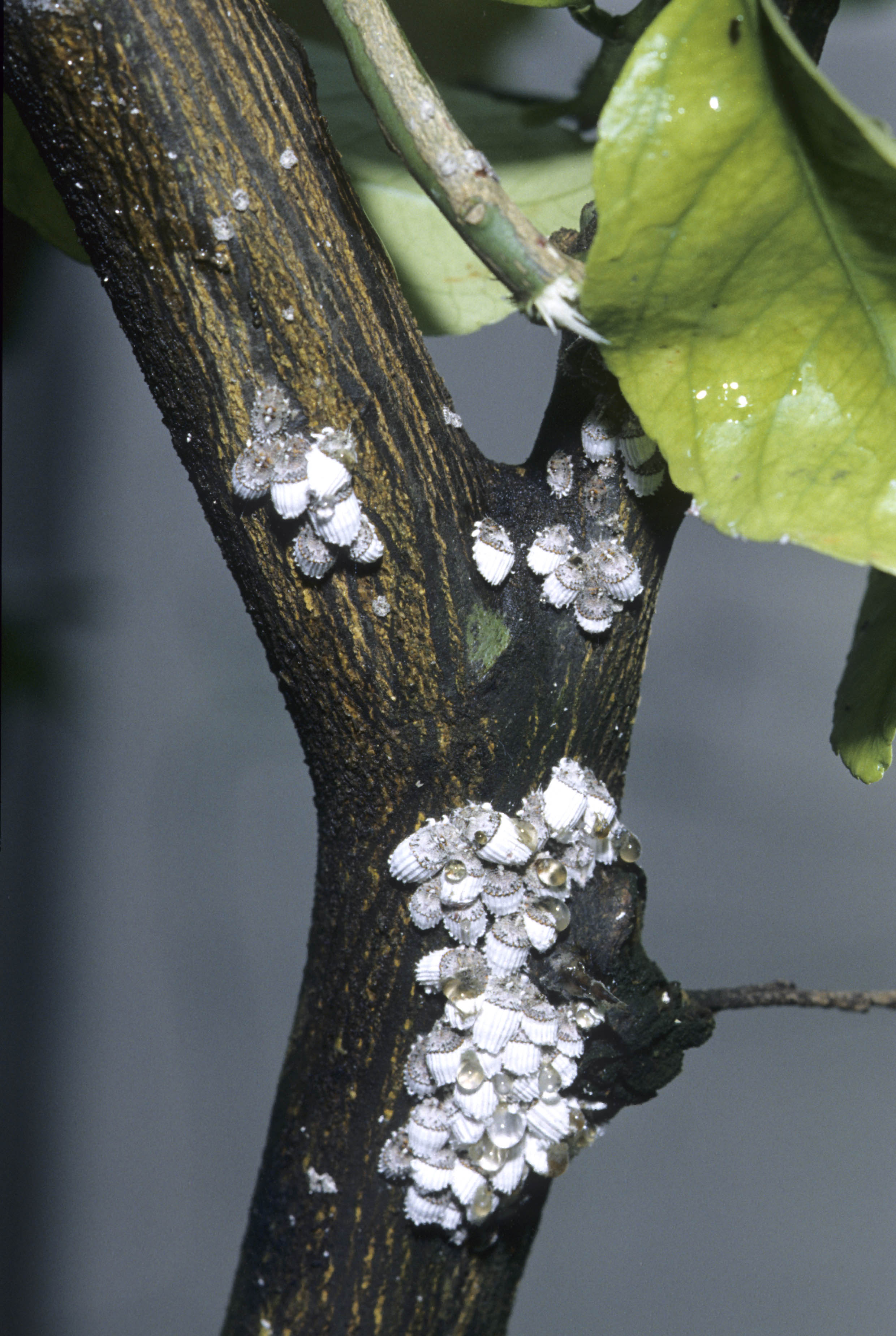
Monitoring
Monitoring is needed most during February–March. Check five randomly selected green twigs per tree and examine each twig for adult scales with egg sacs.
If 5% of the green twigs checked are infested with one or more scales, then actions should be taken.
Control
Natural predators such as lacewings and the vedalia beetle provide the best method for controlling cottony cushion scale, especially as the females and their eggs are protected by both the cottony egg sac and their position inside the tree canopy, making this pest difficult to treat with chemicals.
If you find cottony cushion scale, look for the vedalia beetle and its red eggs and larvae on top of scale egg sacs or look for the beetle’s pupal cases. If natural predators are present, then insecticide treatments are not necessary.
Biological control
Cottony cushion scale is usually well controlled by the vedalia beetle, Rodolia cardinalis, (Figure 4). Adult female beetles lay their oblong red eggs underneath the female scale or attached to her egg sac. The newly hatched reddish beetle larvae chew their way into the egg sac and feed on scale eggs and crawlers. Larvae moult twice and gradually increase in size.
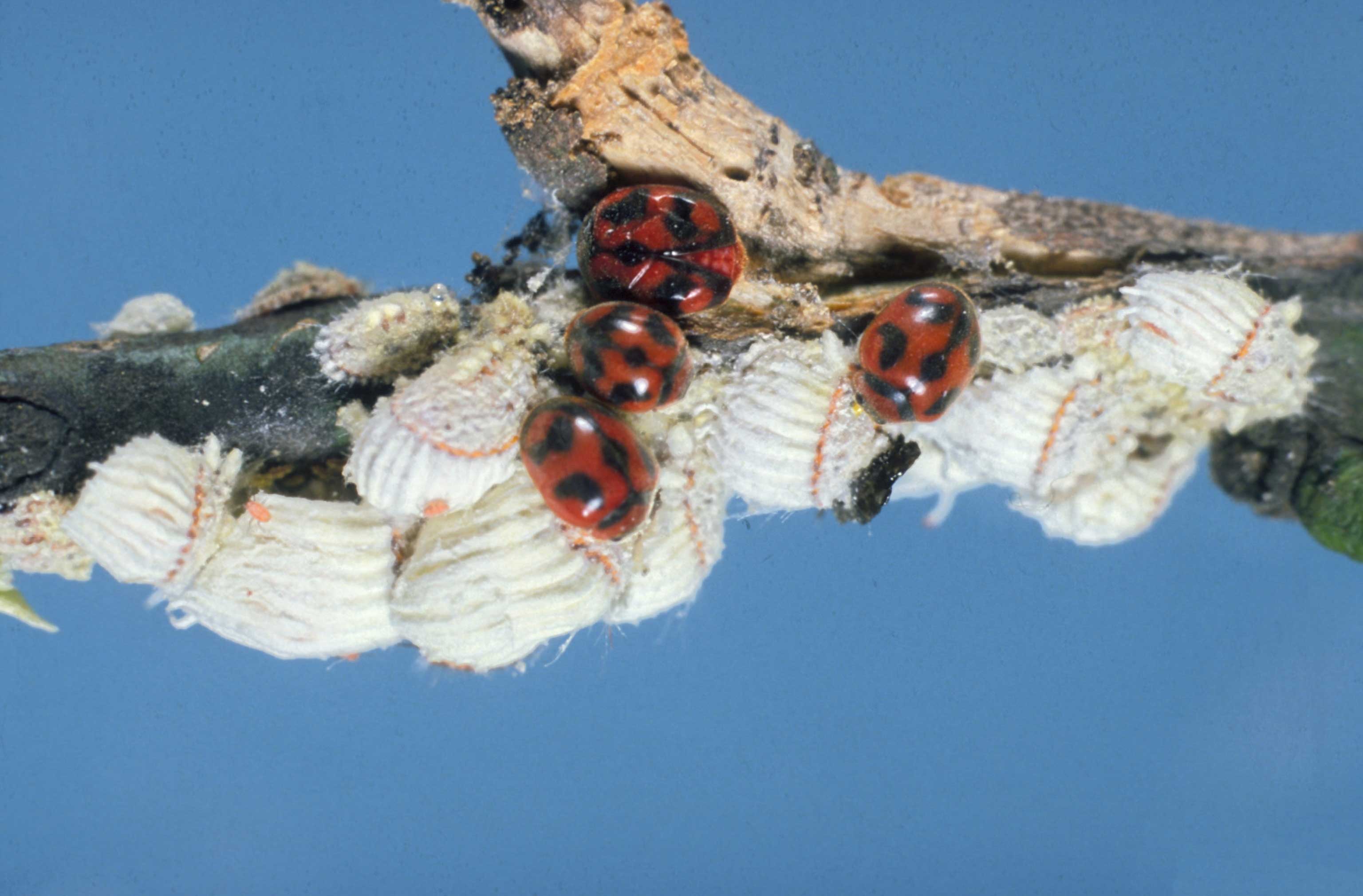
Lacewings (Figure 5) are general predators commonly seen in citrus orchards. They prey on aphids, moth eggs, small larvae, scales and whiteflies. A branch shaken in spring onto a white tray often reveals a lacewing larva on every shake. Green lacewing larvae are disguised by the debris of prey that they carry on their backs (Figure 6). Brown lacewing larvae are not disguised and have clear pincers at the front for attacking prey. Green lacewing eggs are white and attached together on the end of fine white stalks, while brown lacewing eggs are football-shaped and laid flat on the back of leaves.
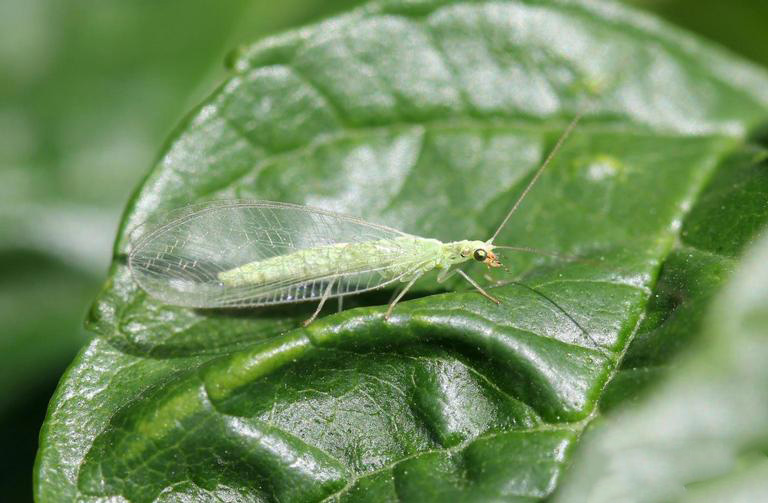
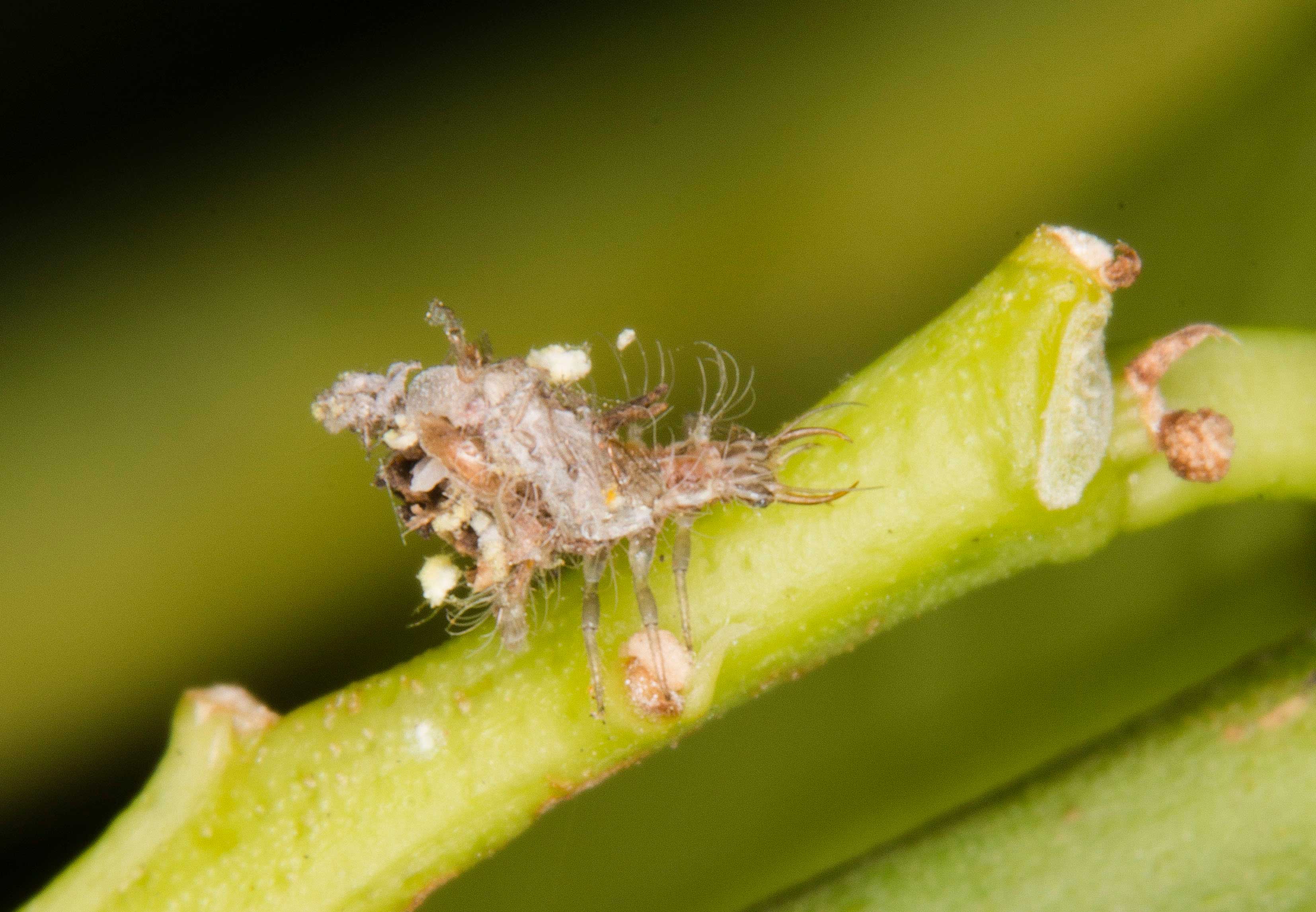
Chemical control
- Appropriate actions include spraying petroleum spray oils (PSOs), which are best applied when crawlers are most active soon after hatching (around mid to late March).
- Check the APVMA PubCRIS database for registered controls.

